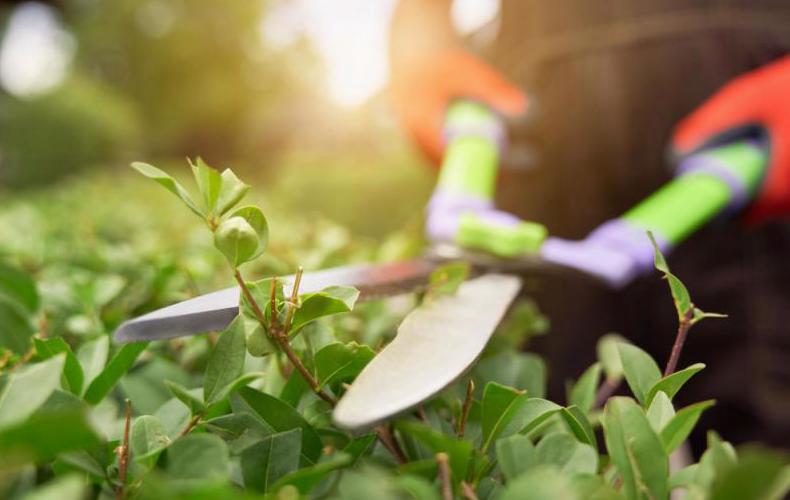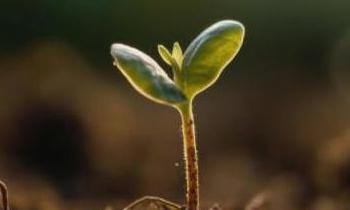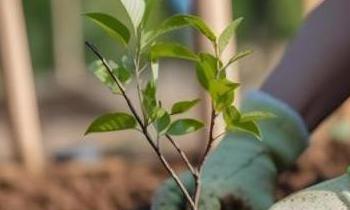
Are you ready to embark on a gardening adventure and bring life to your surroundings? The key to successful planting lies in the preparation of your plants. Whether you're a seasoned gardener or a beginner with a green thumb, this comprehensive guide will walk you through the essential steps to prepare your plants for planting. From selecting the right location to nurturing healthy roots, we'll cover it all. So grab your gardening gloves and let's dive into the world of plant preparation!
To give your plants the best chance to thrive, start by selecting the perfect location. Consider factors such as sunlight, soil quality, and drainage. Some plants prefer full sun, while others thrive in partial shade. Understanding the sunlight requirements of your plants will help you make an informed decision.
When choosing a location, remember that morning sun is often less intense than afternoon sun, which can help prevent scorching on delicate plants.
Healthy soil is the foundation for healthy plants. Start by testing your soil's pH level and nutrient content. Adjust the pH as needed and enrich the soil with organic matter, such as compost or well-rotted manure. This will enhance fertility, improve drainage, and promote root development.
Did you know that earthworms, often considered nature's gardeners, help aerate the soil and increase nutrient availability to plants?
Proper drainage is crucial for plant health. Poorly drained soil can lead to waterlogging, root rot, and the demise of your beloved plants. Incorporate drainage solutions, such as adding coarse sand or pebbles to the soil, or creating raised beds. These measures will help prevent water accumulation around the roots.
Waterlogged soil deprives plants of oxygen, suffocating the roots and hindering nutrient uptake.
Creating an optimal soil structure promotes healthy root growth and enables plants to absorb nutrients efficiently. Loosen compacted soil by tilling or using a garden fork. Incorporate organic matter and compost, which enhance soil structure, retain moisture, and encourage beneficial microbial activity.
If you're planting in containers, choose an appropriate potting mix that provides good drainage while retaining moisture. Select containers with adequate drainage holes and a size suitable for the mature plant's root system. Ensure you acclimate container plants to outdoor conditions gradually to prevent shock.
Keep your plants safe from pests and diseases by employing preventive measures. Regularly inspect your plants for signs of infestation or disease. Implement natural remedies like neem oil or insecticidal soaps to deter pests, and practice proper sanitation to reduce the risk of disease spread.
Watering your plants correctly is essential for their overall health. Deeply water plants at their base to encourage deep root growth, rather than shallow surface roots. Apply mulch around the base of your plants to conserve moisture, suppress weed growth, and insulate the soil, keeping it cool in summer and warm in winter.
A study conducted by the Gardeners Association found that mulching can reduce water evaporation by up to 70%.
To promote robust growth and vibrant blooms, providing your plants with proper nutrients is crucial. Incorporate organic fertilizers into the soil during planting or use slow-release fertilizers for continuous feeding. Be mindful of the specific nutrient requirements of each plant and follow the recommended application rates for optimal results.
Organic fertilizers not only supply essential nutrients but also improve soil structure and foster beneficial soil organisms.
When transplanting seedlings or mature plants, it's crucial to minimize transplant shock and protect the delicate root system. Water the plant thoroughly a day before transplanting to ensure sufficient moisture. Dig a hole slightly larger than the root ball, handle the plant gently, and avoid disturbing the roots. Fill in the hole with soil, firming it gently around the plant.
Once your plants are in the ground, the journey doesn't end there. Regularly observe your plants for signs of stress, nutrient deficiencies, or pest infestations. Adjust your care routine accordingly, whether it's adjusting watering schedules, providing additional nutrients, or addressing pest issues promptly. Proactive monitoring and adjustments can prevent potential problems and ensure the continued health of your plants.
Different seasons require different care approaches for your plants. During the warmer months, ensure adequate watering, provide shade if needed, and watch out for common summer pests. In cooler seasons, protect plants from frost, adjust watering frequency, and consider insulating vulnerable plants. Stay attuned to seasonal changes and adapt your care practices accordingly.
To ensure the longevity of your plants, regular maintenance is essential. Prune overgrown branches, remove dead or diseased foliage, and encourage bushier growth. Some plants benefit from periodic division to maintain their vigor. Stay proactive in your plant care routine, and your garden will thrive year after year.
Preparing plants for planting is a vital step in ensuring their long-term health and productivity. By selecting the ideal location, nurturing nutrient-rich soil, ensuring proper drainage, and implementing preventive measures against pests and diseases, you'll set your plants up for success. Remember to water diligently, provide adequate sunlight, and show some love and care. Now, armed with this comprehensive guide, go forth and create a thriving garden that will bring joy for years to come!

Deforestation, a pressing global issue, refers to the permanent removal of trees and vegetation from forests.
01-04-2023

In our ever-evolving world, the importance of ecological balance cannot be overstated. As we strive to combat
28-02-2023

In an era dominated by climate change and environmental concerns, planting trees emerges as a powerful solutio
28-02-2023

The sight of lush green trees thriving and providing a refreshing atmosphere is truly a marvel to behold. Howe
21-02-2023

In a world where the green canopy of nature is often overshadowed by concrete, planting trees and shrubs becom
20-02-2023